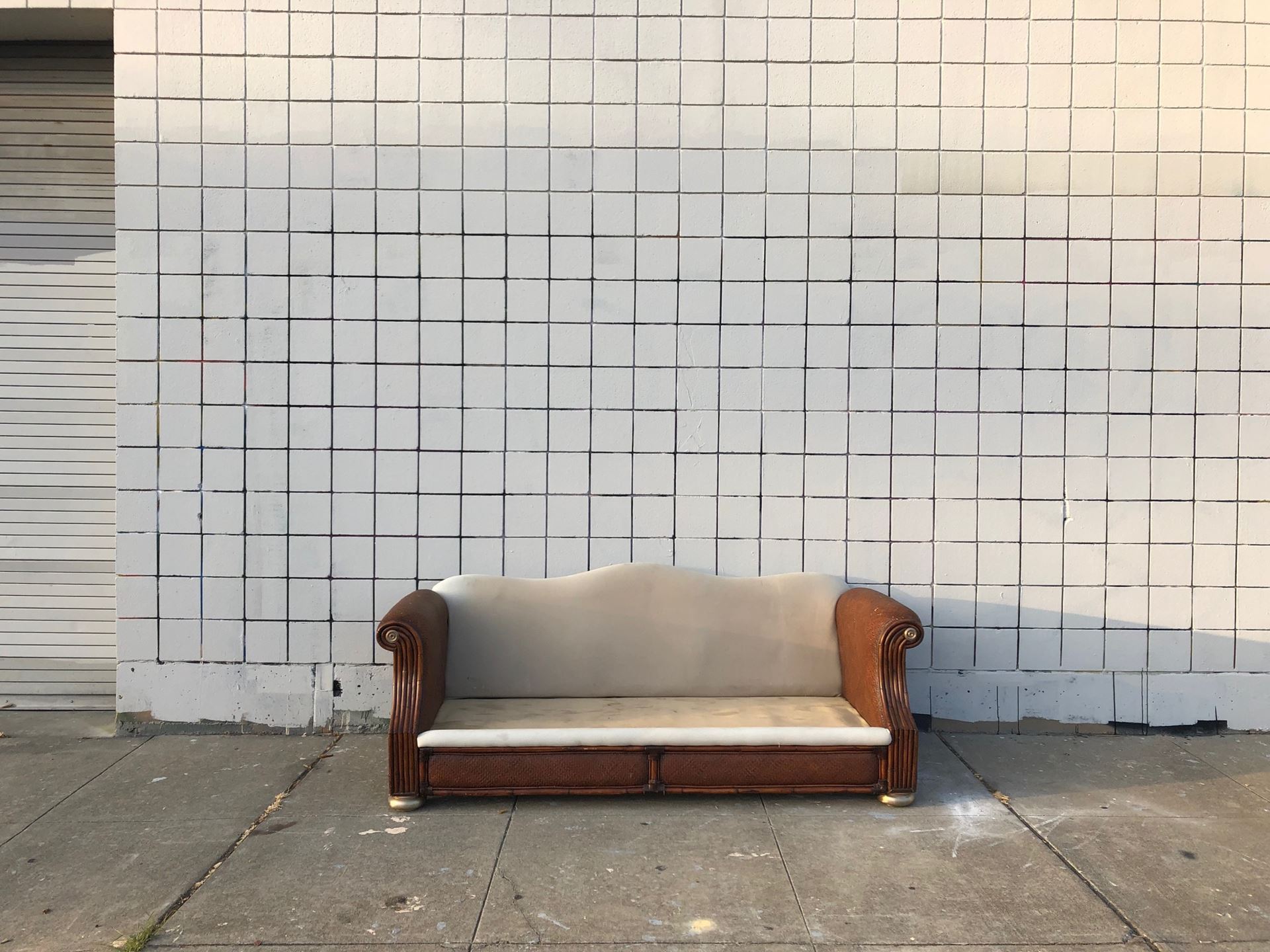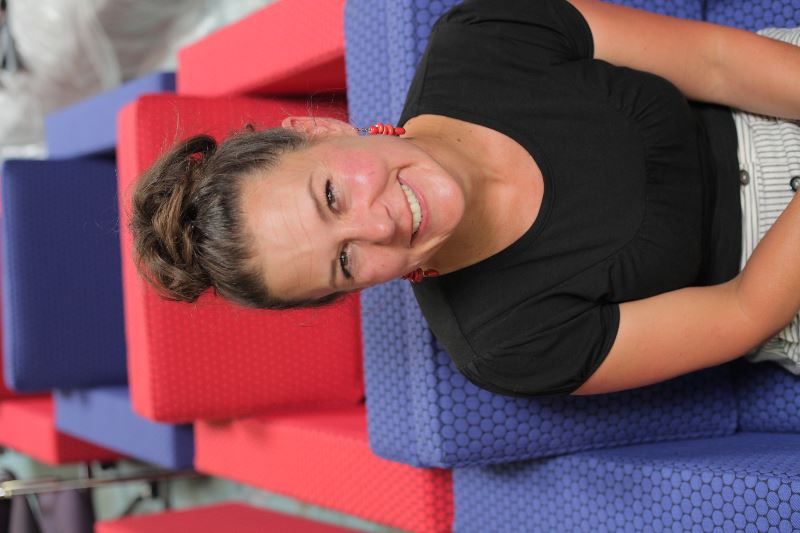By Jamie Facciola, Furniturecycle
 Photo credit: Jamie Facciola
Photo credit: Jamie Facciola
‘Unite and rebuild’ proclaimed an article, in 2019, about how an industry once left to perish could be on the verge of a comeback. The idea that the National Upholstery Association, a brand new trade association started solely by women and dedicated to a trade full of tradition, honor and importance, had launched with such little media fanfare, infuriated me. Determined to imagine a narrative beyond the tired, formulaic piece about DIY upholstery or an upholsterer's retirement, I wrote one myself. I typed that proclamation as one of the NUA’s newest volunteers, hungry to join others in collective action at the industry level. I knew already that reliance upon upstream options, such as buying or selling more durable couches, would never deliver a prosperous and thriving reupholstery industry; just as selling more organic carrots has not brought forth more prosperous family farms. The challenges that led the industry to be regularly described as “dying” are so much bigger and more complicated than any one shop; working as an organized group, I believed, was our only chance to counter them.
Looking Back
Just two short years later, the need for the NUA has only intensified. From navigating an unforeseeable pandemic that led to a crushing boom in business, to managing material and labor shortages, conditions grow more complex each day. How can we imagine a collective prosperous future without an organized body committed to its survival? We have an entire industry that needs future-proofing.
As other associations, like the American Trucking Association, Screen Actors Guild, and the Bar Association, work to stay ahead of changes in their industries--such as the transition to a gig economy and online streaming--we need to, as well. In the last 40-50 years, while we’ve lacked representation and political power, employment in manufacturing has sunk to less than 10% of the American workforce, while imports of wooden furniture soared to 89%. Meanwhile, consumer perception of furniture longevity plummeted, landing at 7.8 years--back in 2006. And furniture waste has exploded: in 2018, over 9.7 million tons of furniture and furnishings, irrespective of quality or reusability, got landfilled, up 450% since 1960. Our connection to labor, craft, quality, materials, community and the environment has been lost.
We shouldn’t be surprised then, that in this same amount of time, skilled labor in the repair trades became stigmatized, training hard to access, a livable wage uncertain. With new, cheap furniture so abundant, used pieces, even high-quality ones, suffer from stigmatization, too. Our societal knee jerk reaction is to see used furniture as gross, out of date, and not worth investing in. These values have seeped into all of our political, cultural, and economic systems: we live in a throwaway society where buying new is cheaper than maintaining what already exists. Nobody knows this better than upholsterers.
Looking Ahead
During presentations, I like to say, reupholsterers have not only the right skill set, but the right mindset: their entire job is to make an imperfect piece perfect. Let’s be real, being imperfect in our culture is a death sentence. We’ve been conditioned by planned obsolescence to see imperfections--real, perceived, or otherwise--as a sign that it’s time to discard and replace. The immediate compulsion to go shopping for the newest, latest version can feel almost obligatory. But you won’t notice, because your consumption will be praised and rewarded through every sphere of influence. Which is exactly how we know that the ethos of reupholstery was born long before the rise of Amazon marketplace.
Reuphosltery came into existence many millennia ago--out of necessity--because scarce resources meant that “making do” made sense. Now that the pendulum has swung so far in the opposite direction, this ancient trade can appear out of sync with modern times. And yet, we’re really one step ahead.
As the climate continues to change and reliable access to natural resources grows increasingly uncertain, once again, out of necessity, extending the life of goods is returning to vogue. It is a common practice to look to, and learn from, the past in order to live more harmoniously today. Business models that monetize every different way to reuse and resell the same thing are on the rise. Estimated sales for used furniture are expected to grow to 16.6 billion by 2025, a 70% increase from 2018. That huge number is dwarfed by an even larger one: 4.5 trillion, the amount of economic output that could be generated by circular economies by 2030.
The tide is turning, and it’s not just businesses leading the way. Just look to the Civilian Climate Corps, an initiative to create 300,000 green, good-paying, union jobs; the Break Free From Plastic Pollution Act, in which corporations would be responsible for the plastic pollution they create; the Right to Repair movement’s fight against planned obsolescence; and the subpoenas issued to Big Oil over their role in spreading climate misinformation. Meanwhile, global marches led by youth activists fighting for their right to grow old on a livable planet fill the streets; these are unprecedented times.
Looking at Us
Is our industry ready to meet this moment? It won’t be without a strong trade association. While other industries try to match up to our ancient mindset and skill set, we need to catch up with their resources, partnerships, power and messaging.
How will the reupholstery industry position itself to take full advantage of this forthcoming wave?
To me, this is the NUA’s ultimate task. Here is how I think about it:
First, let’s be clear. Our value proposition is baked in: we add value to and extend the life of what already exists. This is a core pillar of the circular economy.
Next, I’d reframe reupholstery’s underappreciated, ancient skills as critical to the transition away from an extractive, linear economy. If that’s the rule for entry, then reupholstery needs to be considered a critical part of a future workforce, one that deserves inclusion in the hallowed pantheon of green jobs.
Third, the future won’t look like the past. Though a cottage-industry-approach helped reupholstery survive the age of disposability, its scale is too small to meet the needs of a circular economy. From business models, to technology, to training, to language, to access, to awareness and education, to policies, to partnership building and beyond, permutations are coming.
Finally, this is not just about a livable planet, this is about livable economies. A living wage. Respect. Opportunities. Humans. Our decentralized workforce is highly-skilled and woefully underfunded, under-resourced, and misunderstood. Both current and future generations deserve better.
So, how shall we respond to a global shift that prizes extending the life of goods and celebrates the importance of good, green jobs? By leveraging the NUA to make our voices heard, our contribution known, and our power felt. The road is steep but not impossible. The NUA is living proof that though ‘They tried to bury us. They didn’t realize we were seeds'.
_____________________

Jamie Facciola is the departing Secretary for the NUA and also publishes the quarterly newsletter. During her time with the NUA she is most proud of initiating the quarterly strategic alignment process, creating an industry partnership with the Sustainable Furnishings Council, and contributing to the NUA’s sustainability goals. What she’ll miss most are committee meetings that provided comfort and community during the darkest days of Covid. Jamie’s background is in environmental science, corporate environmental management, and social entrepreneurship. She has worked on local solutions to circular economy challenges in Oakland, CA for the last several years as a laborer, entrepreneur, employee, consultant, and advisor. Her current project, Furniturecycle, explores furniture waste from the bottom up. Jamie is the granddaughter of an upholsterer who worked out of his garage in the SF Bay Area for over 40 years. She hopes you will follow along and stay in touch! Instagram / LinkedIn / Observations & Musings